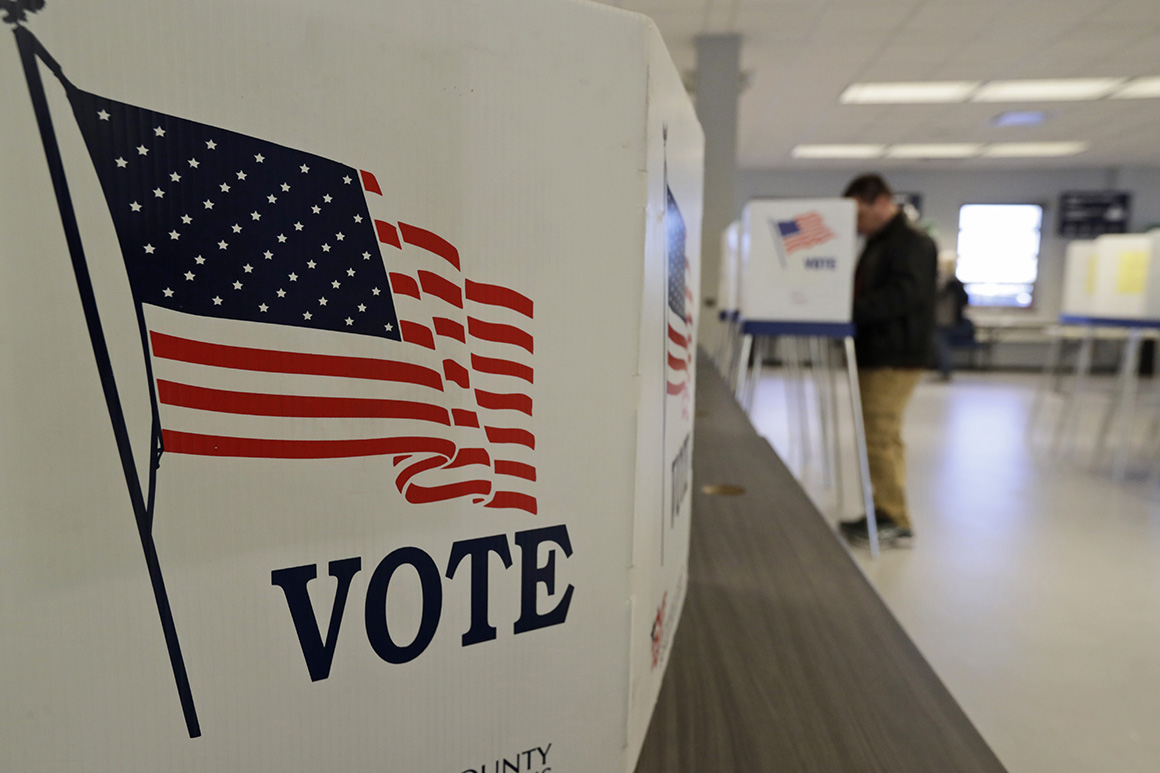
Election officials and voting rights groups continue to call for a major investment from the federal government ahead of the general election to help states adapt to the coronavirus threat. Advocates have called for, at a minimum, the expansion of no-excuse absentee voting — which allows anyone who wants to vote by mail to do so — across the country, along with significant investments in election infrastructure to protect in-person voters and poll workers and manage changes in voting.
“It is going to be a real challenge to do these kinds of fundamental shifts,” said Trey Grayson, a Republican and former Kentucky secretary of state. “Election administrators have their work cut out for themselves. The country and the states need to make decisions now to put those administrators … in [the] position to pull these things off.”
The coronavirus economic relief law President Donald Trump signed last week contains $400 million in election security grants to help states “prevent, prepare for, and respond to coronavirus.” But that’s a number many warn is not nearly enough.
“Everybody needs to contribute, but Congress really needs to pony up,” said Wendy Weiser, vice president for democracy at the Brennan Center. “My view is they’re shortchanging our democracy right now and the American people.”
The Brennan Center estimated its own “Covid-19 election resiliency measures” — which include everything from expanding a vote-by-mail option to every American, safely maintaining in-person voting, and a big public education campaign — will cost $2 billion, an estimate Weiser called “conservative.” Other estimates peg the costs even higher.
Even early shifts toward mail voting in upcoming primaries have proved costly and challenging.
In Wisconsin, where officials have resisted postponing the state’s April 7 primaries because there are also state and local general elections scheduled for the same date, elected officials and the parties have been pushing to get voters to request absentee ballots instead of showing up in person. But clerks across the state ran out of envelopes for the ballots, prompting the state to step in with an emergency order of more than 1 million additional envelopes.
Wisconsin Gov. Tony Evers, a Democrat, also called for every voter to receive an absentee ballot late last week. But election administrators in the state said they wouldn’t have the supplies to do that, the Milwaukee Journal Sentinel reported, and Republican state legislative leaders balked at the request, calling it logistically impossible.
As of Monday morning, more than 883,000 people have requested absentee ballots in Wisconsin, well over the 250,000 absentee ballots cast in the 2016 primaries — but well short of total turnout that year, when about 2.1 million people voted amid competitive presidential contests.
Georgia Secretary of State Brad Raffensperger, a Republican, announced last week his office will mail absentee ballot request forms to every one of Georgia’s 6.9 million active voters ahead of the rescheduled May 19 primary. In an interview with POLITICO before the coronavirus relief package was signed into law, Raffensperger estimated it would cost around $13 million for the absentee voting operation, and he said the state would absorb some of the costs normally borne by counties by using existing federal grant money. “We had enough funds to do this for this one election,” Raffensperger said.
His move — which won measured applause from the Georgia Democratic Party, a rarity in a state that has seen major partisan clashes over voting rights — virtually guarantees the number of votes cast by mail will dramatically increase in this year’s primary, which could test the state’s election infrastructure. Raffensperger’s office said that just about 5 percent of voters in the 2016 and 2018 general elections cast votes via mail.
However, some Republicans in the state blanched at Raffensperger’s plan. State House Speaker David Ralston called for the Legislature to review the expansion of mail balloting in the state, The Atlanta Journal-Constitution reported, and said the primary should be further delayed. County governments and Raffensperger, a former state legislator, rejected Ralston’s calls.
But some states have struggled to adapt. Ohio saw its March 17 primary thrown into chaos with an eleventh-hour polls closure. The state Legislature ultimately decided to extend its primary through April 28 and hold it by mail only.
However, state lawmakers only authorized Ohio Secretary of State Frank LaRose to send postcards to voters with instructions about how to request an absentee ballot form, which they’d then have to obtain and submit to get an absentee ballot. LaRose, a Republican, wanted both a later primary and the ability to directly send ballots to voters. Civil rights groups believe the current April 28 system will disenfranchise scores of voters.
And the general election would be much more expensive and complicated to administer than primary elections in normal circumstances, let alone while battling a pandemic. Significantly raising the number of people who vote by mail is not as easy as just mailing out ballots. Election administrators and advocates agree that it is a complicated and expensive change that requires as much lead time as possible.
“However people are pivoting toward the primaries, the general election is a much bigger test. The volume is dramatically higher,” Weiser said. “Primary elections tend to have more frequent voters who have an easier time participating than general elections. … The task for the general election is a much more significant one.”
Source: politico.com
See more here: news365.stream






